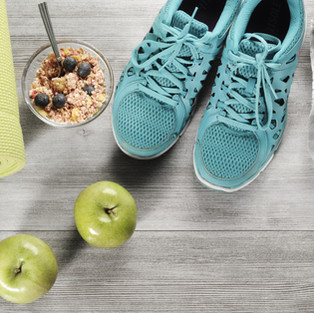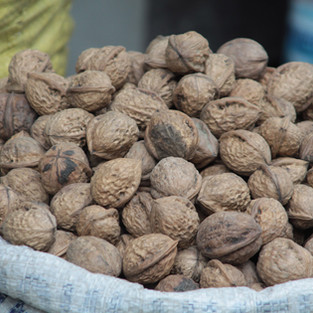What is the Glycemic Index (GI) ?
- Megane Nutrition
- 11 août 2018
- 3 min de lecture
Dernière mise à jour : 5 oct. 2018
What is the glycemic index ?
The Glycemic Index (GI) is a relative ranking of carbohydrate in foods according to how they affect blood glucose levels.
-Foods with a low GI value are more slowly digested, absorbed and metabolised. They cause a lower and slower rise in blood glucose and, therefore insulin levels.
-Foods with a high GI are those which are rapidly digested, absorbed and metabolised. They result in marked fluctuations in blood sugar (glucose) levels that begins with an hyperglycemia (High blood sugar level) followed by a reactive hypoglycemia. The common symptoms of a low blood sugar level are fatigue, dizziness, shakiness, hunger, weakness, headeache, unclear thinking, blurry vision.
Reactive hypoglycemia prompts a sugar craving in an attempt to quickly raise blood sugar again. That’s when it goes wrong because consuming high GI food to get ride of it will only make you feel down again in the next hours or less.
Also, blood sugar roller coaster leads to other health problems like metabolic disorders, poor immune function, digestive problems, sleeping issues, migraines, depression, and a raised risk for diabetes.
The best way to manage reactive hypoglycemia is to focus your diet on low IG food and balanced meals made out of proteins, fats and fibres.
Why proteins, fats & fibres :
Protein & fat :
They lower glycemic effect by delaying stomach emptying.
Fibers :
They slow down metabolism of carbohydrates and their digestion ->Choose whole grain foods (Whole wheat pasta and bread, wild rice, quinoa,..)
You should also focus on :
Cooking process :
It swells the starch molecules and speeds up the rate of digestion giving rise to higher levels of blood glucose.
-> Do not overcook your carbs.
Food Processing :
Highly processed foods require less digestive processing which give them a higher GI.
-> Choose whole fruits over smoothies and juices.
Fruits / vegetables maturity :
GI increases with maturity. The more ripe a fruit or vegetable is, the higher the GI.
-> Choose perfectly ripened fruits / veggies.
Retrogradation :
When carbs are cooled after cooking, a new structure (resistant starch) is formed and give them a lower GI.
This index is not representative on its own, you should pay attention on the entire meal. It is therefore important :
- To have various meals with a protein source for satiety, vegetables for fiber, starch for energy and a drizzle of olive oil or rapeseed oil for a good fat intake
- Do not consume sweet products on their own. You should rather include them into a meal for dessert. You can also have it as a snack combined with a high protein or fat product.
(Ex : chocolate + almonds or yogurt + chestnut cream).

Low-GI breakfast ideas:
-Boiled egg with whole grain bread slices + 1 fruit
-Plain yogurt + 1 tbsp oats + 1/2 to 1 tbsp oat bran + blueberries + 4 to 5 nuts
-Avocado toast (with whole grain bread) +/- 1 plain yogourt (according to your appetite)
-Wasa fiber crispbread + sugar and salt-free nut butter (almond, peanut, hazelnut) + 1 fruit
*Do not forget to rehydrate in the morning with a hot sugar-free beverage (tea, coffee, chicory, infusion) and/or a freshly squeezed lemon juice with room temperature water (do not have it with hot water as the heat would affect the benefits of vitamin C).
GI & weight loss:
High-GI food consumption stimulate release of insulin (hormone), and insulin acts on cells thoughout the body to stimulate uptake, utilization and storage of glucose. This hormone also inhibits breakdown of fat into adipocytes (fat cells) while the excess sugar turns into fat under its action. In addition, insulin allows the storage of fat made directly throughout the food.
That doesn’t mean you should strictly avoid high sugar food but its consumption must remain occasional.
Also balanced meals are the key to limit insulin peak causing storage in the form of fat.
GI food list :
Low-GI :
Cheese, fish, meat, eggs, olives, pesto, nuts de coco, avocado, vinegar, fruits & vegetables (apart from a few exceptions), nuts, grains, Waza fiber crisp-bread, spices, wild rice, legumes, green or light yellow banana, agave syrup, raw carrots and beetroots, sugar-free nut butter, chocolate >70%.
Medium-GI :
Quinoa, buckwheat, whole wheat pasta (al dente), whole rice, whole wheat bread, semolina, sweet potato, dried fruits, freshly squeezed fruit juice, ripe banana, biscuits and cakes made from whole wheat flour, mashed vegetables, fruits puree, cooked carrots, grapes, persimon kaki.
High-GI :
Overcooked pastas, potatoes and other foods made from it, white bread, short grain white rice, breakfast cereals, maple syrup, honey, sodas, pastries, sugar, ice creams, industrial biscuits, cookies and cakes, chocolate bars, watermelon, beer, canned fruits , dates, cooked beetroots.








Comments